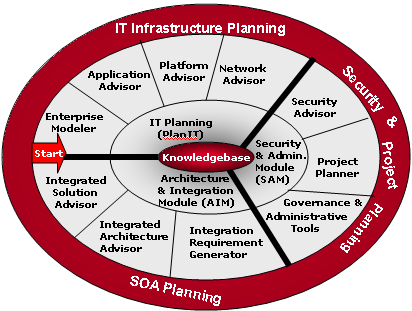IT Infrastructure Planning for Business Growth

Creating a robust and scalable IT infrastructure is crucial for businesses of all sizes. Without proper planning, organizations can face numerous challenges that hinder growth and productivity. In this article, we will explore the key factors to consider when planning an IT infrastructure to accommodate business growth.
Assessing Current Infrastructure
The first step in planning for IT infrastructure growth is to assess the current state of your organization’s technology systems. This involves evaluating hardware, software, networking capabilities, and security measures in place. Identifying any weaknesses or bottlenecks is crucial to develop an effective growth plan.
Employing HTML markup can aid in presenting clear and concise information to stakeholders involved in the planning process. Utilize appropriate heading tags, such as <h2> for subsections, to create a logical structure.
Scalability and Flexibility
One of the primary goals of IT infrastructure planning is to ensure scalability and flexibility. As your business grows, your technology systems must be able to accommodate increased demands. Scalability refers to the ability to expand resources or capacity without major disruptions or significant costs.
HTML paragraphs can be formatted using <p> tags to highlight important information or best practices for scalability. Emphasize the importance of choosing scalable hardware, like cloud-based servers, to easily scale up or down as needed.
Network Infrastructure
The network infrastructure is the backbone of any IT system. The design and architecture of your network play an essential role in determining the speed, reliability, and security of your operations. Leverage HTML markup to create bullet points using the <ul> and <li> tags to list key considerations when planning a network infrastructure.
Bandwidth requirements: Assess your current and future bandwidth needs to ensure smooth data flow.
Redundancy and failover: Incorporate backup connections and redundant hardware to minimize downtime.
Security measures: Implement firewalls, intrusion detection systems, and proper access controls to protect your network from cyber threats.
Wireless capabilities: Evaluate the need for a reliable wireless network to support mobility within your organization.
Data Storage and Management
As your business grows, the volume of data generated and processed also increases significantly. HTML tables can be utilized to present comparisons of different data storage options, such as on-premises servers versus cloud-based solutions. Use the <table>, <tr>, and <td> tags to structure the information neatly.
On-Premises Servers
Cloud-Based Solutions
High initial investment
Pay-as-you-go pricing model
Requires dedicated IT staff
Vendor-managed maintenance and updates
Physical infrastructure management
Reduced maintenance and scalability concerns
Furthermore, emphasize the importance of data backup and disaster recovery planning. Elaborate on the significance of implementing HTML forms using <form>, <input>, and <button> tags to ensure regular data backups and the creation of a comprehensive disaster recovery plan.
Collaboration and Communication Tools
An efficient IT infrastructure should include tools and technologies that enable seamless collaboration and communication among employees, customers, and stakeholders. Introduce HTML links using <a> tags to redirect readers to relevant examples of collaboration and communication tools.
The use of project management software, video conferencing solutions, and instant messaging platforms can streamline internal and external communication, enhancing productivity and facilitating growth.
Security and Compliance
Data security and compliance with regulatory standards are paramount considerations in IT infrastructure planning. Make use of HTML blockquote tags to create visually distinguished sections, emphasizing the importance of implementing robust security measures.
“By leveraging industry-standard encryption methods and multi-factor authentication, businesses can protect sensitive data and build trust with customers.”
– IT Security Expert
It is vital to address GDPR, HIPAA, or other applicable data protection regulations, highlighting the significance of implementing HTML form elements for users to provide consent, such as checkboxes or radio buttons, as part of a comprehensive compliance strategy.
Conclusion
Proper IT infrastructure planning is crucial for supporting business growth. By assessing the current infrastructure, considering scalability, designing a robust network, implementing effective data storage solutions, adopting collaboration tools, and addressing security and compliance requirements, businesses can build a strong foundation for future success.
Remember to utilize HTML heading tags, paragraphs, bullet points, tables, links, forms, and blockquotes to enhance the readability and presentation of information in this comprehensive guide. By employing these markup elements, you ensure that stakeholders have a clear understanding of the IT infrastructure planning process for business growth.